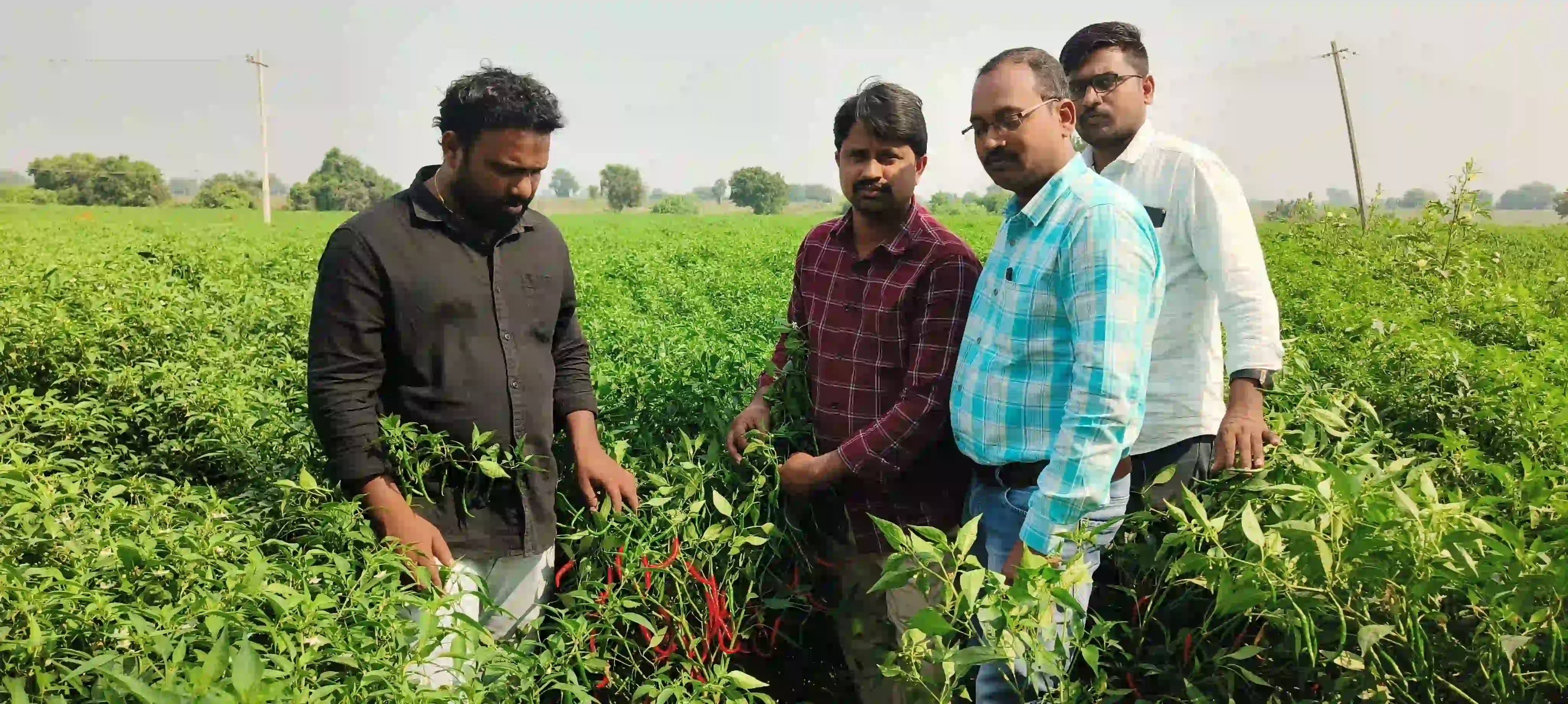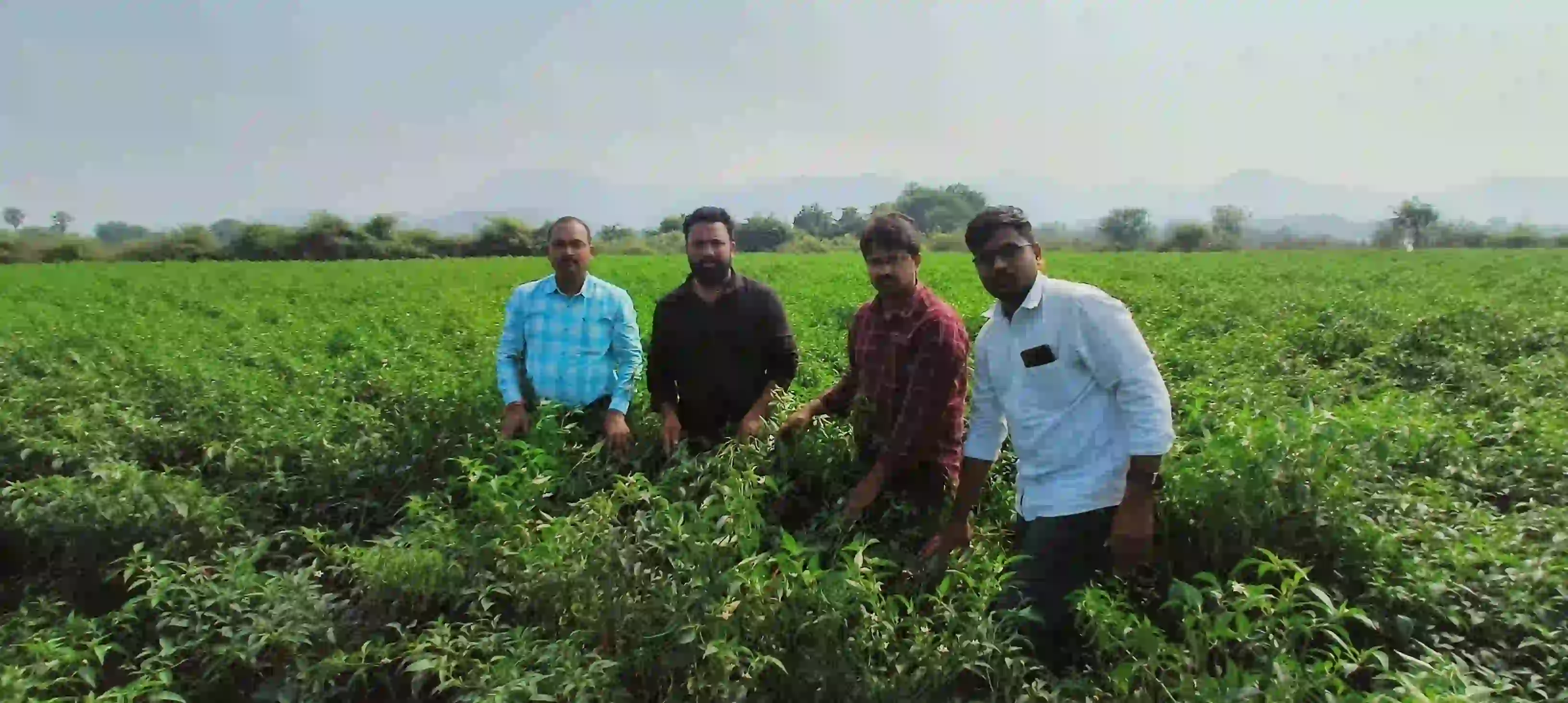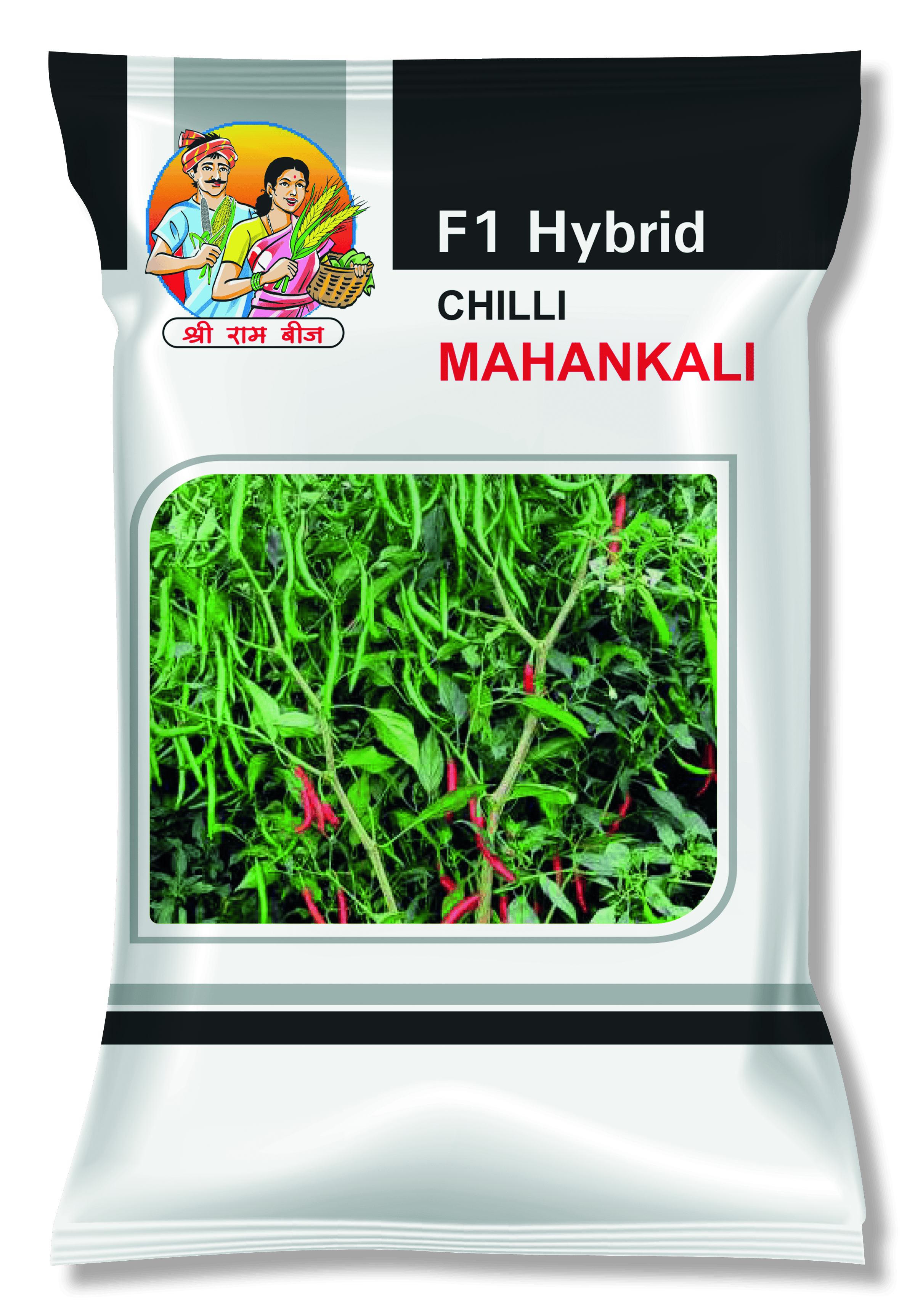High-Yielding Hybrid Chilli for Superior Market Demand
MAHANKALI is a top-performing F1-hybrid chilli variety,
known for its strong, bushy plant structure and thick-walled
fruits. With its dual-purpose usability, this variety is
thick dark green when fresh and deep red when mature. The
100% virus resistance, high pungency, and attractive dark
red dried fruits make it an ideal choice for commercial
farmers seeking high yields and premium market value.
Challenges & Solutions
Chilli farming presents challenges such as disease
susceptibility, inconsistent fruit quality, and price
fluctuations. MAHANKALI is engineered to address these
issues effectively.
Challenges
Common difficulties with conventional chilli varieties
include:
Solutions
MAHANKALI provides exceptional benefits to farmers:
Performance and Profitability
Yield Potential (Kg/Ha):
MAHANKALI delivers a high and stable yield, ensuring
consistent profits for farmers.
Adoption Rate:
Farmers prefer MAHANKALI for its strong disease resistance,
high pungency, and premium-quality dried fruits.
Farm Profitability:
With low input costs and high market value, MAHANKALI is a
highly profitable variety for chilli growers.
Market Demand:
The thick, dark green fresh chillies and deep red dried
chillies make MAHANKALI a top choice for traders, spice
processors, and export markets.









